There seems to be strong trend developing in the personal training / strength and conditioning industry involving the use of foam rollers to perform soft tissue work. This appears to be another fad which was borrowed from physical therapists, similar to when “wobble board” training became all the rage. I look at this as an example of a useful tool being taken out of context and significantly overused, to the detriment of this profession, in my opinion.
Great trainers and coaches (even some of the best) have become foam rolling fanatics, prothesizing the many benefits of raking various muscles over these rigid cylinders. In no way does this detract from their expertise or credibility, but I do think it is time to take a more critical look at the growing “religion” of foam-rollers.
The proponents of foam-rolling often describe it as a form of “self-myofascial release” (SMR). No, despite how that sounds it’s not something naughty you do in front of your computer late at night! OK, so what the heck is myofascial release? SMR is a technique intended to treat “myofascial restrictions” and restore soft-tissue extensibility. It is frequently misunderstood and often described in terms of pressure affecting the Golgi Tendon Organ which causes the muscle to relax via autogenic inhibition. Some argue that this technique relaxes and lengthens not only the muscle, but also stretches the fascia surrounding it, thereby improving “tissue quality” and achieving greater range of motion. Sounds good, right? Well, let’s look at what’s really going on here…
What is more likely happening during myofascial release is an increase in movement of one layer of fascia over another, or even movement of fascia sliding over muscle. It is unlikely that this will actually “relax” or stretch fascial tissue, considering the tensile strength of fascia. But it does cause your muscles to become looser. However, this is not necessarily a good thing.
Foam rolling can be compared to deep tissue massage or static “passive” stretching, which can reduce innervation of the affected muscle groups, thus inhibiting their ability to contract. Essentially, this will leave the muscles temporarily weaker and with less tone… not what I would call “better tissue quality”. This may lead to a greater passive range of motion at the affected joints, but at the expense of active joint stability. You have just put your muscles to sleep and created slack in your joints, which is NOT a good thing before training!
To quote an article by Peter Chiasson (RIP), was the lead Neuromuscular Rehabilitation Specialist at Core Strength in Toronto:
“The relaxation response from foam rolling, stretching, deep tissue massage, and even modalities like A.R.T. (Active Release Technique) affect the neurological function of a muscle and dampen the afferent messaging process travelling towards the CNS. This makes contractile tissue less prepared to deal with unexpected load. Let’s consider this for a second… so you are “UN-preparing” your muscles for load! To tell a muscle to stop pulling so hard when pulling was exactly what it was designed to do just doesn’t make a lot of sense to me.”
=> Questioning the Use of Foam Rollers (Click HERE to read Peter’s article)
Even if one was to argue for the long term benefits of greater flexibility achieved by this method, a study from the UW-L Journal of Undergraduate Research indicated that no increased range of motion was associated with the use of foam rollers.
=> (Go HERE to view the UW-L study)
Most professionals in the fitness and performance industry already understand the negative effects of static stretching before exercise (refer to my article on stretching), but for some reason the connection hasn’t been made with foam rolling. So if you are beginning your training sessions with a dynamic warm up, isometric muscle activation exercises, and active mobility drills, which I would argue is a great idea, but then you proceed to employ the foam roller you are essentially getting your muscles “fired up” and then subsequently “shutting them down” right before the workout!
I once heard a well known trainer use the analogy of a an off-balance bicycle wheel, arguing that if one spoke is too loose, you must loosen up all of the spokes to bring it back into balance. Does that make sense? As I understand it, to maintain stability and structural integrity of the wheel, you need to tighten the loose spoke and ensure a certain level of balanced tension between all of them.
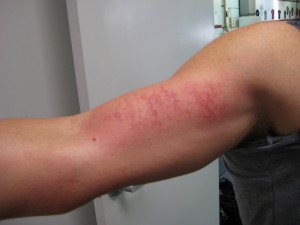 |
| The Painful “Results” of Foam Rolling |
It is a common approach in this industry, to address muscle tension and pain by attempting to aggressively “loosen up” all of the associated ‘tight’ muscles, when in fact the more sensible approach is to assess and strengthen your weak links. As much as you dislike it, that tension is usually there for a reason; it is a form of protection to create stability where there is a muscular imbalance. If you simply stretch or “roll” away the tight muscles before addressing the related weakness and correcting the imbalance, you have just created more instability.
For example, if your shoulders and chest muscles are sore and tight, rather than stretching them, focus on activating and strengthening your mid-back. Once you have restored a healthy muscle tone and strength to the scapular stabilizers, your posture will be improved and the compensatory pectoral tension will be relieved. It’s a matter of addressing the root of the problem (which is typically weakness and instability, ie: the “loose spokes”) rather than the symptoms (ie: the residual tightness in other muscles due to compensation for that weakness). You may not get the instant gratification attained by foam rolling, but you will be building greater structural integrity and developing a long term solution.
This video demonstrates the effect of foam rolling on muscular force output:
I am a strong advocate of a technique called Muscle Activation Technique (MAT), founded by Greg Roskopf. There is plenty of great information on this technique on the website www.muscleactivation.com, explaining the importance of addressing muscle weakness rather than muscle tightness. Check it out.
OK, but what about trigger points… don’t we need to roll those out? I’ll let Mike Nelson, CSCS, answer that:
“Now before you get all crazy on trigger points and how they affect muscular force (which is a good point), how did the trigger point get there? I’ve done a fair amount of cadaver work and so far I have yet to see one trigger point. Actually non-fixed (fresh) tissue does not hold tension on its own. I have yet to see a slab of muscle get tense! Yes, certain structures are stiffer than others, but I have yet to see any muscle or tendons that resemble piano wires that I see in most people’s necks. The nervous system is controlling the level of tension. Plus the thought of adding high amounts of external tension to your body in order to relieve tension seems odd to me. So I should add the thing I am trying to reduce?”
=>Get Off the Foam Roller (Read Mike Nelson’s FULL ARTICLE here)
I understand that my opinion on this subject is not a popular one, but despite the fact that it may not benefit me to share this information, I do believe it will benefit you, the reader.
So the next time you are considering raking yourself over your Extra-Rigid High Density Foam Roller to tenderize your IT bands, I’m suggesting you think again. Do your research and consider what your goals actually are. Do you want to achieve muscle looseness and passive range of motion at the expense of stability, or are you looking for muscle strength and stability with a healthy active range of motion?
I’m not saying that the foam roller has no practical applications. I am simply implying that it is over-used and inappropriately applied. If you are still convinced of its effectiveness, at the very least I strongly recommend that you refrain from using it before training and aim to be more specific and a little less “aggressive” with your rolling. If you are really interested in educating yourself about foam-rolling, rather than just jumping right back on your foam roller with the rest of the fitness sheep, then here are a few more excellent articles on the subject:
=> The Foam Rolling Debate – Todd Hargrove
=> A Critical Analysis of the Research in Favor of Foam Rolling – Bret Contreras
=> Do Foam Rollers Actually Work? A Review of the Evidence
I hope I’ve given you something to think about and provided an alternative viewpoint on foam rolling. Please do take the time to review the articles and studies listed above before becoming defensive of your love of foam rollers! Remember, there are two kinds of people: Know-It-Alls and Learn-It-Alls. If you have questions or want more information on the subject, please feel free to contact me.
Stay fit,
Josh Hewett
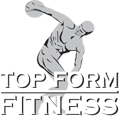



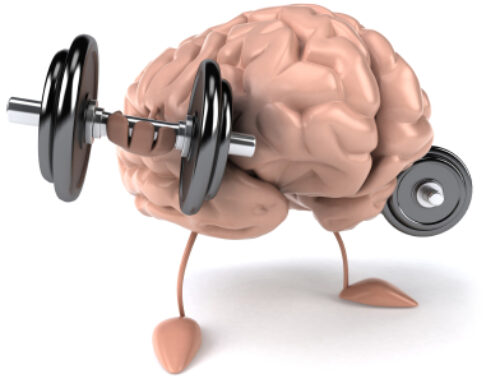
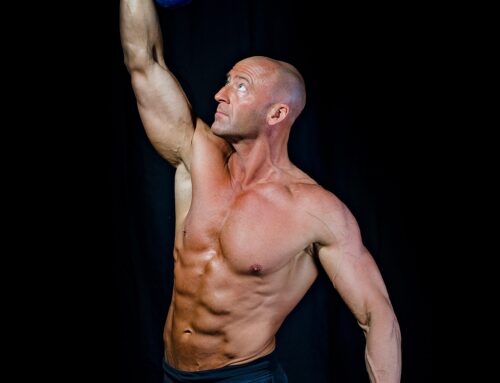

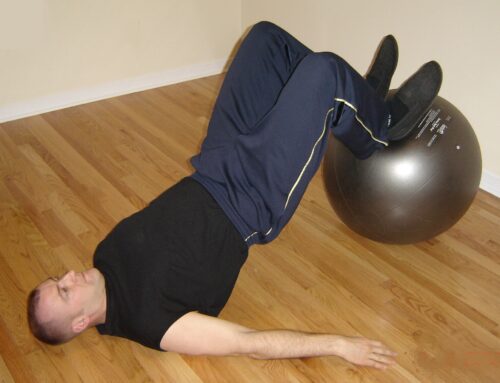

[…] I know, I’m treading on sacred ground here! Foam rolling (what some call SMR, or Self-Myofascial Release) has almost become a cult now, with everyone from therapists, to trainers, to coaches recommending the almighty foam roller to their clients. My issue with foam rolling is based on similar grounds to my issues with passive stretching. To me it is strange that many of the same savvy trainers who understand that passive stretching is not a good idea before training are now recommending foam rolling before exercise. The negative effect is almost exactly the same! To learn more about this trend I highly recommend that you check out my article called Is Foam Rolling Really Such a Good Idea. […]
Hmmmm… I’ve had problems with ITB, gracilis, calfs and groin ( what, nothing else?!?) and they have been “cured” by the foam-roller. I’ve learned that I easily cramp, I don’t need much to do so… I had a cramp in my Gracilis for three (!!!!) months before I got help to massage it all away. The pain was similar to giving bith : ) Do you mean that I will get more problems if I roll? I see both chiropractors and similar to check problems with excellent results.
Hello Anna,
Thanks alot for your comment! Sorry to hear about your history with muscle cramp, etc. True that many can get temporary relief of muscle `tension`issues with massage or similar `release`therapies (foam rolling, deep tissue work, chiropractic, passive stretching, etc), but typically the problem will return soon after (especially if the individual is still training hard), or another issue will appear as a result of the `tissue release`. This is not to say everyone will have problems with foam rolling… it really depends on how efficient your nervous system is, and how unbalanced your muscular-skeletal system is.
As explained in this article (and the links provided within… strongly suggest you read), muscle tension (spasms, cramps, etc) are usually secondary or as a result of muscle weakness elsewhere. Your body will attempt to stabilize or compensate for this weakness by tightening up an associated muscle(s), which can result in the `tight muscle`problems you speak of. The problem with simply addressing the symptom you feel (tension) rather than the root of the problem (weakness or inhibition) is that once you `relax`the tightness/spasm with external force (massage/rolling) it removes the body’s attempt to stabilize without strengthening or activating the weak link that caused the problem. Massage / rolling / passive stretching all dampen the nervous system activation of the target muscle, basically making it weaker and looser… sure it’s not tight any more, but it’s no longer doing it’s job of maintaining stability. If one is relatively sedentary and doesn’t challenge those muscle groups at all, they may not experience problems; or on the other hand if you are a well conditioned elite athlete your body may be able to handle this without noticeable issue. But most physically active people can run into problems with the ’tissue release’ approach. Please read my post on Muscle Activation to understand this idea: Muscle Activation Technique
Unfortunately this can lead to further instability and weakness, which may not appear as the same symptoms but other compensations may arise. The solution involves muscle testing for weakness, and addressing that weakness through isometric and isolation exercise. In addition, active stretching can be employed for the ‘tight’ area. I know this is a different way to approach muscle tension and pain, compared to what you’re used to, but it’s a growing field of study and I’m optimistic that soon this perspective will be the norm. If you have any questions related to this please let me know.
Stay fit!
Josh
my calculations say ive geanid 5 pounds of muscle?hey!.so ive been measuring my body fat every week, in the mornings along with my weight, waist circumference, lean mass and body fat in pounds. so my results seem to say that ive geanid 5lbs of lean mass (muscle) in about a week. my body fat is still the same; 9.5% (aim to get down to about 6%). i previously weighed 11.2 now im 11.7. so if my body fat is still 9.5% (about 15lbs of fat) and my lean mass and weight have gone up that’s muscle right?. im pretty sure im right but seems amazing that ive geanid 5lbs of muscle. is it really possible ?!?!?!? ive been training hard eating spot on really healthy sept od sugar in tea…
Hello Anil,
from what I understand it is very unlikely to gain 5 lbs of lean tissue in a week regardless of diet or training… unless you were previously depleting your water, calories and carbs then suddenly increased them for this week (such as a bodybuilder after cutting for a show, then loading up after); or if you are relatively new to strength training; or if you are using anabolic hormones. Remember that if your BF% is the same but you gain weight, you also have more body fat … because 10%BF of 100lbs is 10lbs of fat, and 10% of 110lbs is 11lbs of fat. Much of that weight can also be cell volumization if you are now hydrating better (drinking more water). Regardless, it is a great sign that you are gaining lean tissue… good job!
google…
G http://images.google.com.hk/…
My doctor recommended a golf ball muscle roller, it has really helped my muscles recover.
http://zzathletics.com/Golf-Ball-Muscle-Roller-Massager-GBMR1.htm
[…] Is Foam Rolling Effective? […]
If you’re going to make claims like this, at least provide references to back up your “research”. There is a significant amount of research out there to indicate that foam rolling can improve joint ROM without decreases in strength & stability (Healy, 2013. Macdonald, 2012), increase flexibility without decrement to muscular force (Sullivan 2013). In short, back up your claims with research, as anecdotal evidence is quite useless.
You like foam-rolling James… I get it. But I’m wondering if you took the time to read the full article and check the links I provided? Bret addresses some of the research in favor of Foam Rollling in his post here:
http://bretcontreras.com/a-critical-appraisal-of-the-foam-rolling-research-by-greg-lehman/
and there are other references you can follow in Mike’s and Todd’s articles as well.
But I’m not familiar with the Sullivan study… I’ll look at it, thanks. Either way, one should continue to be a critical thinker and question the application of different training strategies. Where foam rolling may serve a purpose for some, it may be contra-indicated for others. I have found it very counter-productive for myself (as have many others) and my article and references explain why this might be.
But as we both know, there will be research to back up almost any ambiguous hypothesis in our industry (ie: the ongoing debate on cholesterol being bad or good; and the “don’t eat eggs” argument).
At least consider the info I provided in balance with what you have read and applied. I’ll try to do the same.
Thanks for taking the time to comment!
I just read the Sullivan study and I would be interested to check a before and after MVC of the other side of the axis (knee extensors). That is the great thing about science and exploration… We get to respect each other for always being curious…for always seeking more questions to ask…without judgment or bias. Indeed that is what allows the leap from convention to innovation.
thanks for share!